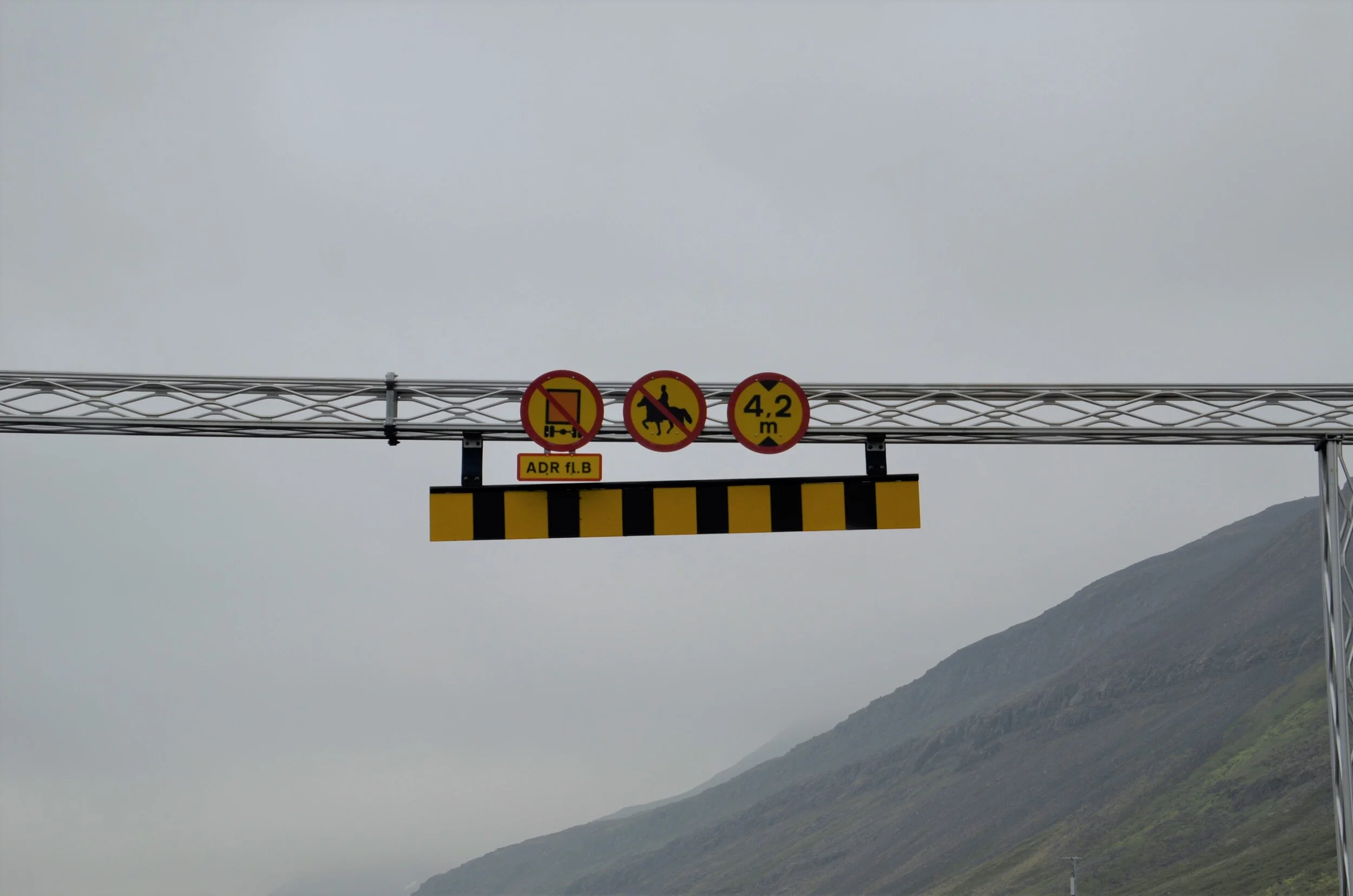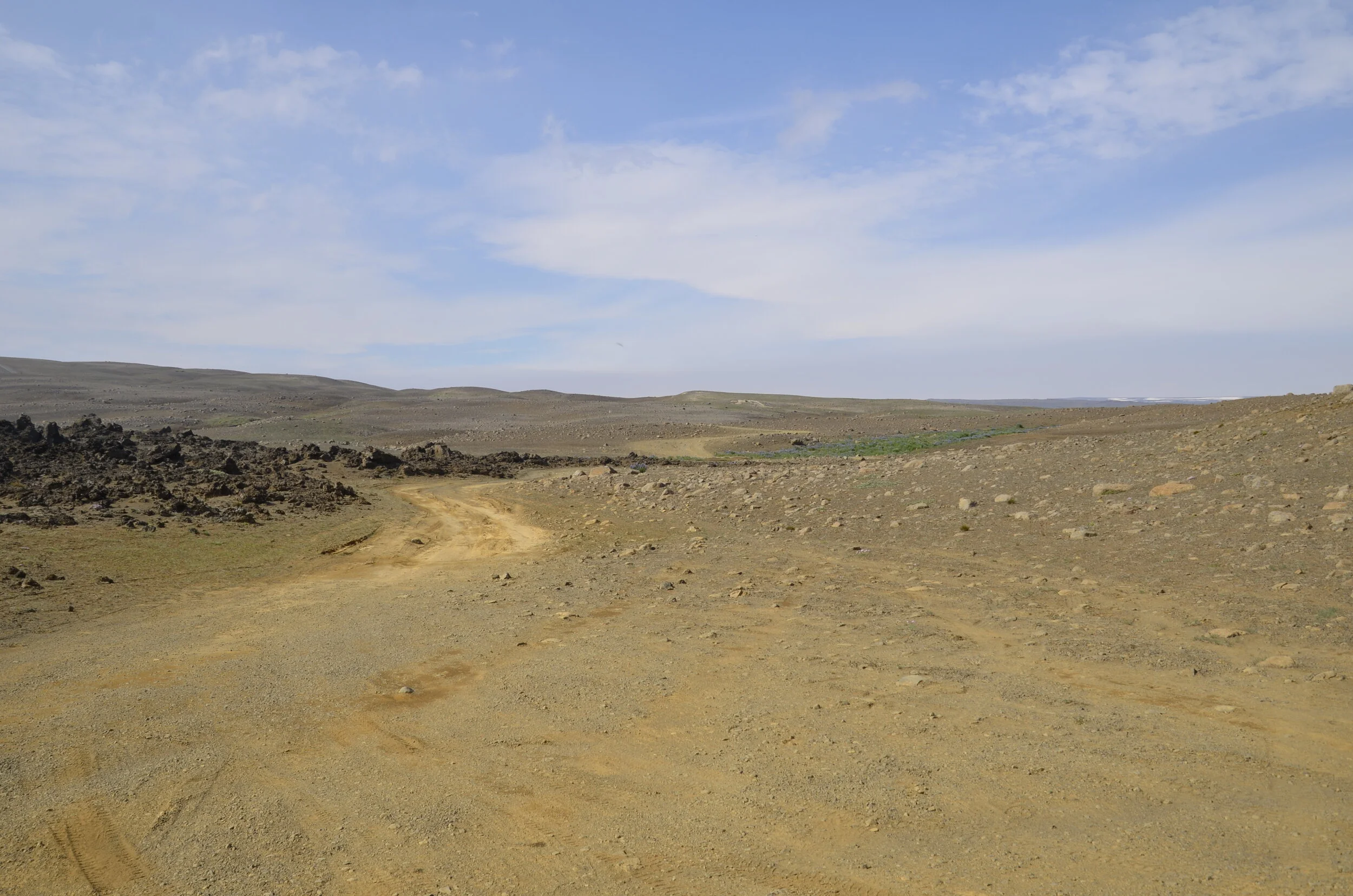Driving around Iceland (by Steve)
We landed in Keflavik (the international airport, located 45 minutes from Reykjavik) on June 17, and picked up our four wheel drive Dacia Duster—which is an entry level vehicle with 130,000 kilometers under its belt, but definitely a step up from our cars at home. :-)
It did not take long to run into a problem. Shortly after starting our trip, we fired the vehicle up one morning only to see the low pressure tire warning on the dash. We filled the tires up, but in less than 4 hours the warning light reappeared. Unfortunately, it was Sunday—and Icelanders take the day of rest seriously; no mechanic was to be found. So for our several hour drive down the coast to our next town, we made sure to pull into every gas station and top the tires off.
The next morning, we came out from our isolated Airbnb and found the tire completely flat. Luckily, we had a full-sized spare, so I loosened the lugs and jacked the car up—only to find that the tire/wheel wouldn’t come off of the hub! I pushed, shoved, and even kicked the tire, but it wouldn’t budge. So, I called the rental company:
Steve: Our tire is flat, and I can’t get the wheel to separate from the hub.
Operator: Ah, it must be a Duster, they have a tendency to do that.
Steve: Yes, it is a Duster.
Operator: Try kicking the tire.
Steve: I did that and it didn’t work.
Operator: Do you have someone with you?
Steve: Yes, my wife.
Operator: You should both kick it at the same time.
Steve: But it is up on the jack.
Operator: Yes, you should both kick it.
Steve: Ummm…. OK? “Lisa, come out here!”
Much to our surprise, our mutual vigorous kicking did the job—and the car didn’t fall off of the jack!
Iceland is basically the size of Kentucky, with a total population of 343,000 (216,000 of whom live in the Reykjavik area). With this population density and distribution, even much of the main highway around the country (Route 1, aka the “Ring Road”) is only lightly traveled for most of the country. So it makes sense that the majority of bridges in the East and North, much less on the rural roadways in the Westfjords and Snæfellsnes Peninsula (which are not served by Route 1), are only one lane:
Only rarely do these signs contain an English caption; but it is not that difficult to figure out !
The Ring Road is a high quality, predominantly two-lane highway that is roughly the same length as the drive from Houston to Nashville (1,328 kilometers / 825 miles) and, much like the American west, lightly serviced in many areas. Moreover, when you happen upon a gas station in the hinterlands, there is a good chance that it will be untended; thus, you need to have a credit card with a PIN to dispense gasoline (although you can pay with your smart phone at some of these stations). And, given the distance between stations, it is a good idea to keep your fuel gauge at 1/2 or above. (note that gas is about $7.20 a gallon here)
We almost made a big mistake on this by relying upon our fuel gauge and “remaining range” indicator. One morning, we drove away from civilization towards the glacier lagoons, with a “half tank.” After we reached our turnaround point and started the 100 kilometer return trip, however, we noticed that the fuel gauge was falling in tandem with the plunge in remaining range from “160 Kilometers” to 100, then 60, then, literally, “- - -”. Time for another call to the car rental place: “approximately how many kilometers are left when the fuel warning light comes on?” Given the answer, we saw that we had 7 kilometers to spare! Luckily, the wind was behind us. The owner’s manual gives the fuel tank capacity as “approximately 50 liters.” In reality, it is at least 50.4.
Once you get off the Ring Road, it isn’t only the bridges that can be narrow. In the Westfjords, there is a 7 kilometer tunnel, which is not only 1 lane for much of its length, but it has an intersection in the middle!
Luckily, although the occasional sheep is said to wander in, horses are not allowed:
And there are handy pull outs for the lane that does not have the right-of-way:
Lane with Red Arrow must yield for the next 4 kilometers
Pullouts are handy, but some might wish they were bigger!
Outside of the tunnels, narrow roads are a bit less interesting, but still can be a challenge, even though they tend to be well marked:
Fortunately, you often have either warnings or other help when cresting blind hills on these narrow roads,
and the country is amazingly good at providing directional signage:
(The symbol behind Aldeyjarfoss is the universal “tourist attraction” indicator on signage.)
On Day 13, we saw our first traffic light of the trip in Akureyri, the largest city outside of the capital district, which boasts a population of 18,000. Two days later, we discovered that Akureyri actually has at least 12 traffic lights (although we continued looking for our second stop sign until day 17!).
As you might suspect, the empty areas on the map give plenty of space for the country’s 400,000 sheep, which tend to be proudly free range:
Still, being sheep, they enjoy walking and sunning themselves in the roadway, which serves to keep drivers alert on long rural stretches:
Roadside sheep almost always come in threes: the Ewe and her two lambs.
Another impact of the sheep is found on some secondary roads (but not on the Ring Road itself):
Old style sheep gate
Steve’s high-priced gate opener
If you visit Iceland and choose to drive, you’ll want to determine your itinerary and, if necessary (or if you plan to rely on Google Maps and its “shortcuts”), get a 4WD vehicle, as certain roads (the “F” roads) are off limits to standard vehicles—even those with all wheel drive.
These roads, which are only open in the summer, are basically lightly plowed gravel/rock/dirt,
with water crossings of various depths a possibility.
Even with four wheel drive and decent ground clearance, you should be careful. Sometimes, the road is no longer there:
Fortunately, our target waterfall was off to the left, before the fence, on a car width path/trail that didn’t rise to F road status.
Other times, the road is simply too difficult for mere four wheel drive vehicles:
Needless to say, you don’t want to be this guy, who was less than 100 meters past the above warning sign:
“So that’s why they put the sticker on the dash about insurance not covering damage from water crossings….”
Fortunately, our rental car didn’t experience that much excitement. After heading out to the westernmost point in the country at the end of our third week, however, it finally looked like it had been put through a wringer:
The multiple hour gravel road trek was worth it though, not only for the scenery and Lisa’s bird pictures, but also because it contained one of my favorite road signs from Iceland:
No dogs permitted, but falling to your death is O.K.??
These are 2 other favorites, one of which took us a couple moments to figure out the first time we saw it:
Now, this is a proper cliff edge warning!
We searched for the landing strip, then realized it was a wind advisory…
Finally, on July 12, we drove into Reykjavik, having to pass through only one more tunnel, which ran for 6 kilometers under the fjord, but had at least two lanes all the way through
Then, after driving multiple lane highways and experiencing the subjective traffic crush, we were reminded that although Reykjavik is a world class city, it is closely surrounded by agricultural areas:
In the heart of the City, across from the University and National Museum, close by numerous consulates.
Finally, we reached the rental car office and returned our trusty steed, with an additional 5500 Kilometers (3400 miles) on the odometer. It was a fun month and we’d definitely recommend a driving tour of Iceland if you have the time and inclination. The roads are good (except where you are warned in advance that they are not), navigation is fairly easy, and the drivers are attentive, polite, and compliant with the rules of the road—just keep an eye out for those sheep!


























